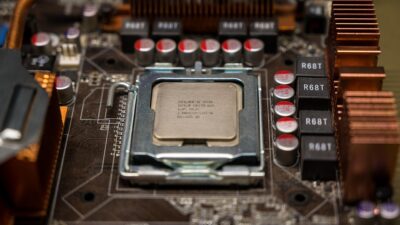As we advance toward a more digital and data-driven world, Graphics Processing Units (GPUs) are set to play a pivotal role in various sectors, from gaming and entertainment to artificial intelligence and scientific computing. By 2030, we can anticipate significant transformations in GPU technology that will enhance their capabilities, efficiency, and applications. Here are some key trends to watch.
1. Increased Performance and Efficiency
One of the most notable trends in GPU development is the relentless push for increased performance. With every generation, GPU manufacturers are adopting novel architectures, elevating clock speeds, and expanding memory capacities. By 2030, we can expect GPUs to harness advancements in semiconductor technology, leading to smaller, faster, and more power-efficient chips. Techniques such as 3D stacking and chiplet architectures will enable GPUs to deliver significant performance gains without proportional increases in energy consumption.
2. AI and Machine Learning Integration
The integration of artificial intelligence (AI) and machine learning (ML) capabilities into GPUs will redefine their utility. As workloads increasingly involve advanced computational tasks, manufacturers will optimize GPUs specifically for AI applications. By 2030, we can expect a rise in dedicated AI accelerators within GPUs, supporting real-time analytics, predictive modeling, and enhanced graphics rendering. This trend will not only improve performance for AI tasks but also allow for innovative applications in fields such as healthcare, finance, and autonomous driving.
3. Ray Tracing and Real-Time Rendering
Ray tracing, a technique that simulates the way light interacts with objects, has already begun to revolutionize graphics in gaming and virtual realities. By 2030, real-time ray tracing capabilities will become standard in GPUs, enabling even more lifelike graphics and immersive experiences. This trend will enhance not only gaming but also industries like architecture and product design, where visual fidelity is paramount.
4. Increased Adoption of Cloud and Edge Computing
The convergence of GPUs with cloud and edge computing will change the landscape of how we utilize graphics processing. By 2030, more industries will leverage cloud-based GPU solutions for tasks ranging from deep learning to high-performance graphics rendering. This shift will democratize access to powerful computational resources, allowing smaller businesses and individuals to perform tasks previously reserved for those with expensive hardware. Furthermore, the rise of edge computing will see GPUs deployed in localized environments, optimizing performance for real-time applications in smart devices and IoT systems.
5. Enhanced Multitasking with Virtualization
As GPUs evolve, their ability to efficiently handle multiple workloads will be crucial. Virtualization technologies will allow a single GPU to share resources among various applications and users, leading to more efficient utilization. By 2030, we will likely see GPUs equipped to run numerous applications simultaneously, thereby supporting demands in data centers, cloud services, and even consumer electronics.
6. Sustainability and Environmental Considerations
As global awareness of environmental issues rises, the tech industry, including GPU manufacturers, will likely face increasing pressure to develop sustainable technologies. By 2030, we can anticipate innovations aimed at reducing the carbon footprint of GPUs. This could involve optimizing manufacturing processes, improving energy efficiency, and developing recyclable materials. The emergence of energy-efficient GPU architectures will be crucial as industries strive for greener operations.
7. Integration with Quantum Computing
Although still in its infancy, quantum computing is poised to transform the computational landscape radically. By 2030, we could see GPUs working in conjunction with quantum processors, effectively handling complex calculations and simulations that are currently infeasible. This hybrid approach could enable breakthroughs in various fields, such as cryptography, materials science, and drug discovery.
8. Gaming and VR/AR Evolution
The gaming industry will continue to influence GPU development significantly. By 2030, we can expect GPUs to enhance not only traditional gaming experiences but also the realms of virtual reality (VR) and augmented reality (AR). Improved performance and capability in these areas could lead to more immersive environments, realistic simulations for training, and breakthroughs in social interactions through digital spaces.
Conclusion
The future of GPU technology through 2030 promises to be transformative, driven by advancements in performance, efficiency, and AI integration. As GPUs continue to evolve, their impact will be felt across numerous industries, redefining how we interact with technology. Keeping an eye on these trends will be essential for individuals and businesses looking to harness the full potential of GPU advancements in the coming years. Whether in gaming, computing, or beyond, the future looks bright for GPUs.


